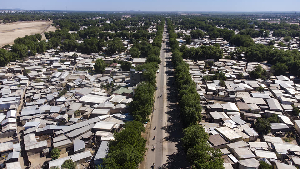Out of about 20 million people in Cameroon, 3.9% of the working population carries the HIV virus, i.e around 620 000 people living with the HIV virus.
It’s at least what says the estimated prevalence rate at present in Cameroon through the Spectrum software. This new percentage, although regressive compared to 4.3% estimated in 2011 by the last demographic and health surveys, indicates however that the disease “resists” in Cameroon.
The National Committee to Fight against AIDS (CNLS) held its first regular meeting of 2016 on 23 June. The agenda of this meeting focused on the validation of the 2015 activity report of CNLS and validation of the 2016 Action Plan, already implemented since last January.
Indeed, the CNLS 2015 work report indicates that the number of male condoms distributed in the general population increased between 2011 and 2015, respectively from 22 million to 33 million and a half.
Regarding the prevention of transmission of HIV from mother to child (PMTCT), Option B+ (antiretroviral treatment implementation of all HIV-positive pregnant women screened. Editor’s note) currently recommended by the World Health Organization (WHO) is now adopted in Cameroon.
The number of health facilities offering this option rose from 32 in 2014 to 2 873 in 2015. During that year, 625,564 pregnant women were seen at first prenatal visit, among which 562,473 benefited from the screening test, 31 596 tested positive.
26,678 HIV-positive pregnant women received treatment. Among children exposed to HIV, 9,756 benefited from the screening at birth and 529 were positive for Polymerase Chain Reaction (PCR), a treatment for newborns.
Meanwhile the 2016 action plan, plans to detect 1,536,365 people, including 622,075 pregnant women and 24,013 children exposed to HIV. 224,563 adults and children will be put on ARV treatment.
To this end, the strategy of “Test And Treat” was adopted by Cameroon. The number of biological monitoring tests has been reduced to facilitate access to treatment, we learn.
As recommendations, was asked among other things, to establish a pharmacy-vigilance unit for people living with HIV, to redouble their efforts to face challenges in the fight against AIDS.
Infos Santé of Wednesday, 29 June 2016
Source: lcclc.info













